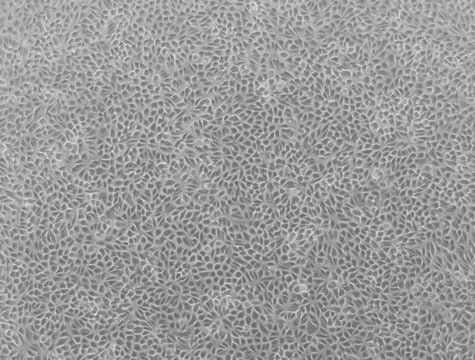M4526
Meio mínimo essencial de Eagle
Alpha Modification, with sodium bicarbonate and Earl's salts, without ʟ-glutamine, ribonucleosides and deoxyribonucleosides, liquid, sterile-filtered, suitable for cell culture
Sinônimo(s):
MEM
About This Item
Produtos recomendados
product name
Meio mínimo essencial de Eagle, Alpha Modification, with sodium bicarbonate, without L-glutamine, ribonucleosides and deoxyribonucleosides, liquid, sterile-filtered, suitable for cell culture
Nível de qualidade
esterilidade
sterile-filtered
forma
liquid
técnica(s)
cell culture | mammalian: suitable
Impurezas
endotoxin, tested
componentes
Earle’s salts (5% CO2): yes
sodium pyruvate: yes
glucose: yes
L-glutamine: no
HEPES: no
Hanks’ salts (2% CO2): no
phenol red: yes
NaHCO3: yes
stable glutamine: no
Condições de expedição
ambient
temperatura de armazenamento
2-8°C
Procurando produtos similares? Visita Guia de comparação de produtos
Descrição geral
Aplicação
- immature cumulus-oocyte complexes from mice
- human mesenchymal stem cells (MSC)
- mouse pre-osteoblastic cell line
Reconstituição
geralmente comprado junto com este produto
produto relacionado
suplemento
Código de classe de armazenamento
12 - Non Combustible Liquids
Classe de risco de água (WGK)
WGK 1
Ponto de fulgor (°F)
Not applicable
Ponto de fulgor (°C)
Not applicable
Certificados de análise (COA)
Busque Certificados de análise (COA) digitando o Número do Lote do produto. Os números de lote e remessa podem ser encontrados no rótulo de um produto após a palavra “Lot” ou “Batch”.
Já possui este produto?
Encontre a documentação dos produtos que você adquiriu recentemente na biblioteca de documentos.
Os clientes também visualizaram
Artigos
Human renal proximal tubule epithelial cells (RPTECs) are commonly used to predict human renal drug permeability and to investigate drug efflux. We have generated transporter knockout (KO) cell lines using CompoZr® Zinc Finger Nuclease (ZFN) technology in a proprietary renal proximal tubule epithelial cell line.
Nossa equipe de cientistas tem experiência em todas as áreas de pesquisa, incluindo Life Sciences, ciência de materiais, síntese química, cromatografia, química analítica e muitas outras.
Entre em contato com a assistência técnica







